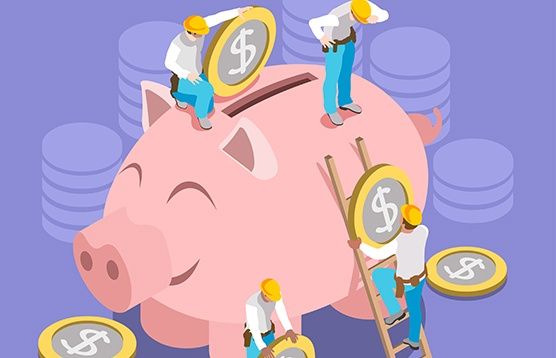Start by tracking your spending. Food, bills or a day of shopping—the key is to record everything. You will also need to estimate the cost of tuition and fees, books, supplies, housing and travel expenses for your chosen school.
The U.S. Department of Education’s College Scorecard can help you estimate these costs.
Second, you will need to record your income. Your income may come from a number of sources like an allowance, a college savings account, a part-time job or student financial aid. If you have not received a student financial aid offer, you can use FAFSA4caster to estimate the amount.
Record your income and expenses on paper, in a spreadsheet or using a budgeting app like Mint. Choose the method that is most comfortable and easy to stick with. The recommended timeframe to record your income and expenses is at least one month—longer if you can.
Step Two: Classify What You Spend
Once you have identified your expenses, you will need to group them into two categories, fixed expenses and variable expenses.
Fixed expenses are predictable month-to-month. These expenses are usually mandatory. Examples include rent payments, car payments or utility bills.
Variable expenses change from one month to the next. Examples include dining out, entertainment or groceries. These are expenses you will need to monitor and reduce if they get out of hand.
Additionally, you will want to save a little money each month. This will allow you to prepare for unexpected expenses and prevent you from blowing your budget should an emergency occur. Your savings goal should be three to six months of your total spending. Sound like a lot? Don’t worry, committing to save a little each month is the first step to building your savings.
Step Three: Balance Your Budget
Now that you have classified your income and expenses, it’s time to look at your budget to make sure it’s balanced. Balancing your budget is as simple as subtracting your expenses from your income. The goal is to have a positive difference between the two numbers.
If you have a positive balance, then it’s the perfect time to use the additional funds to your benefit – remember that emergency fund you are building! Something else to consider is using some of the funds to pay back any student loans you may have acquired. A positive balance may also indicate you could borrow less next time.
If you have a negative balance, then you are spending more money than you bring in. You will want to review your expenses and identify ways you can cut back. Variable expenses are usually easiest to reduce. Get creative!
Consider eating at home more often or packing your lunch rather than eating out during the day.
If you love to spend your money on clothes, stretch your budget by shopping at vintage and resale boutiques or by sharing clothes with a group of like-minded friends.
You should also consider reducing your fixed expenses. While this may involve more commitment than reducing your variable expenses, these are savings that will continue to accrue each month.
Do you need all those TV channels, or could you and a buddy watch your shows together and share the cost?
Can you switch to a less expensive cell phone provider or plan? Using Wi-Fi instead of wireless data has the potential to save you a lot of money (just be careful to use a secure network).
Step Four: Maintain Your Budget
With your budget created and balanced, you will want to keep it updated over time. This is easy to do, and by practicing these good habits now your budget will have you prepared for just about anything.
Create a routine. Update your budget on a monthly basis. Have you had a change in income? Refer to Step Three for ideas about what to do, whether your balance is negative or positive. Continue tracking your expenses.
Practice thoughtful spending. When thinking about making a purchase that does not fit within your planned budget, ask yourself a few questions first.
- Is this a need or want?
- How will buying it today benefit me in the future?
- Can my budget afford it?
- Am I willing to delay my financial goal(s) to make this purchase?
You get the idea. The purpose of having a budget is to thoughtfully guide yourself through your time as a student. By making the right financial decisions and keeping your budget balanced, you will be on your way to a successful and financially secure future.
